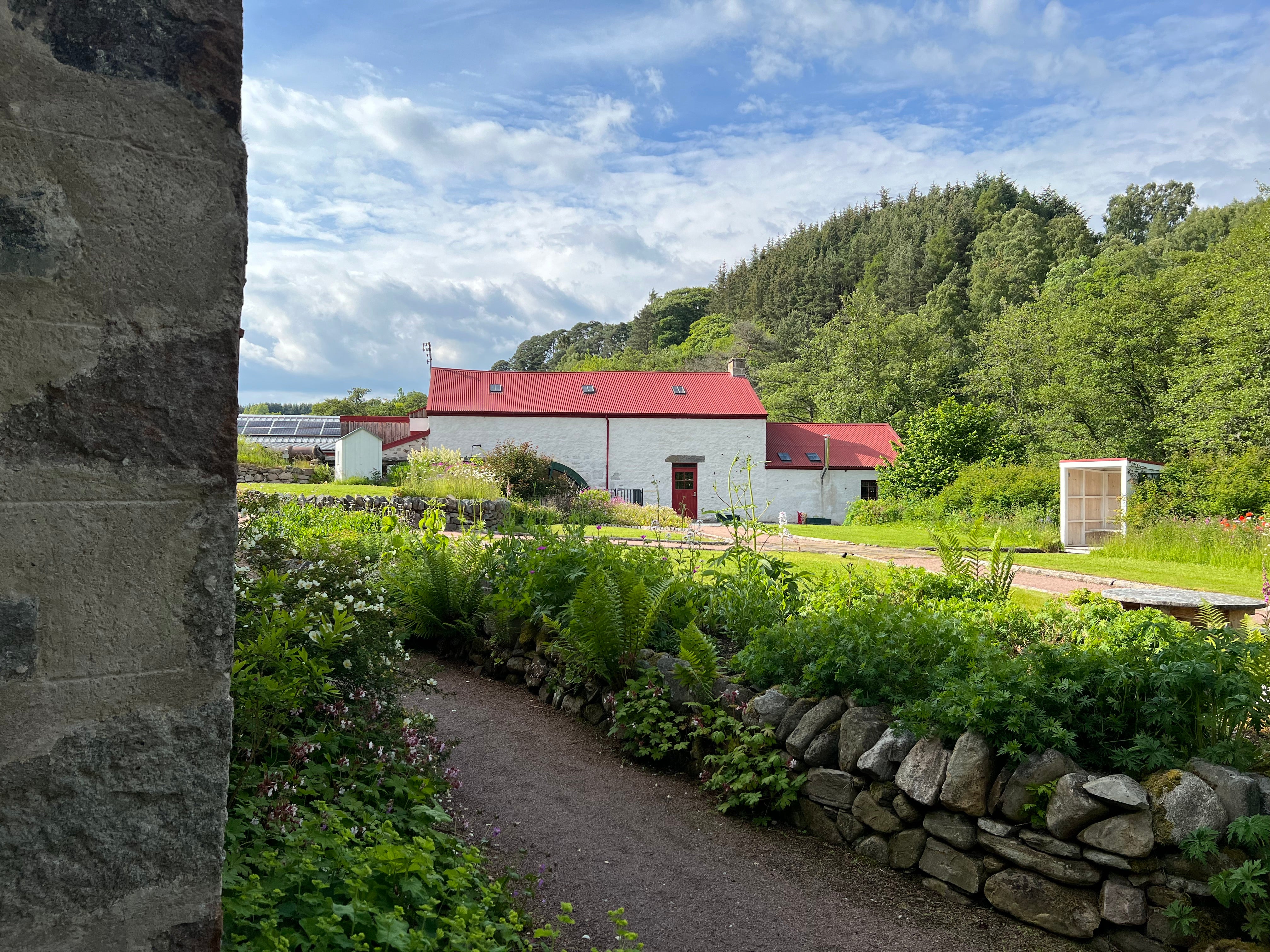News
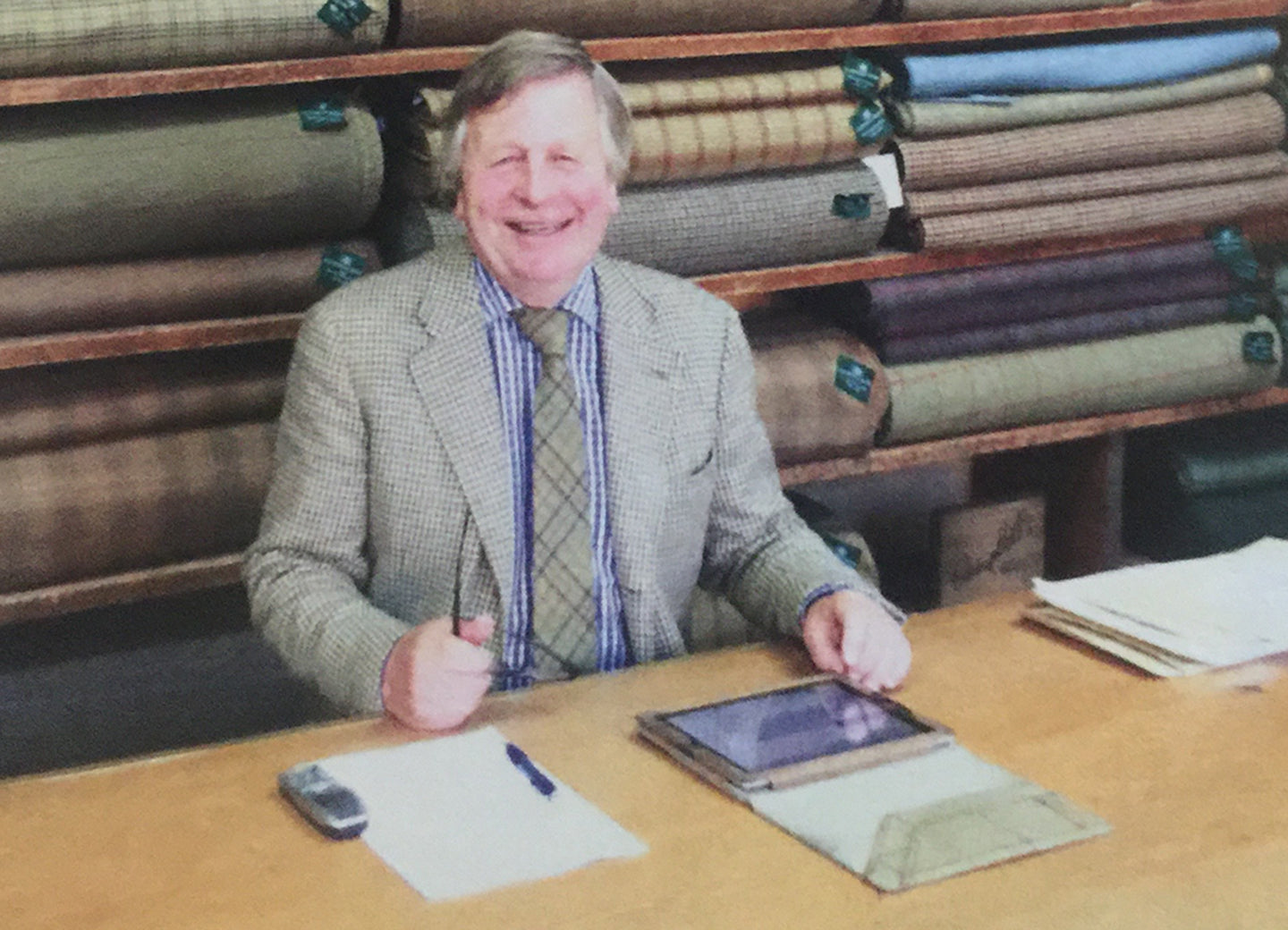
It is with sadness we hear of the recent death of James Sugden, for many years the managing director of Johnstons of Elgin. James was always enthusiastic about the Woolmill and was very supportive ...
Read more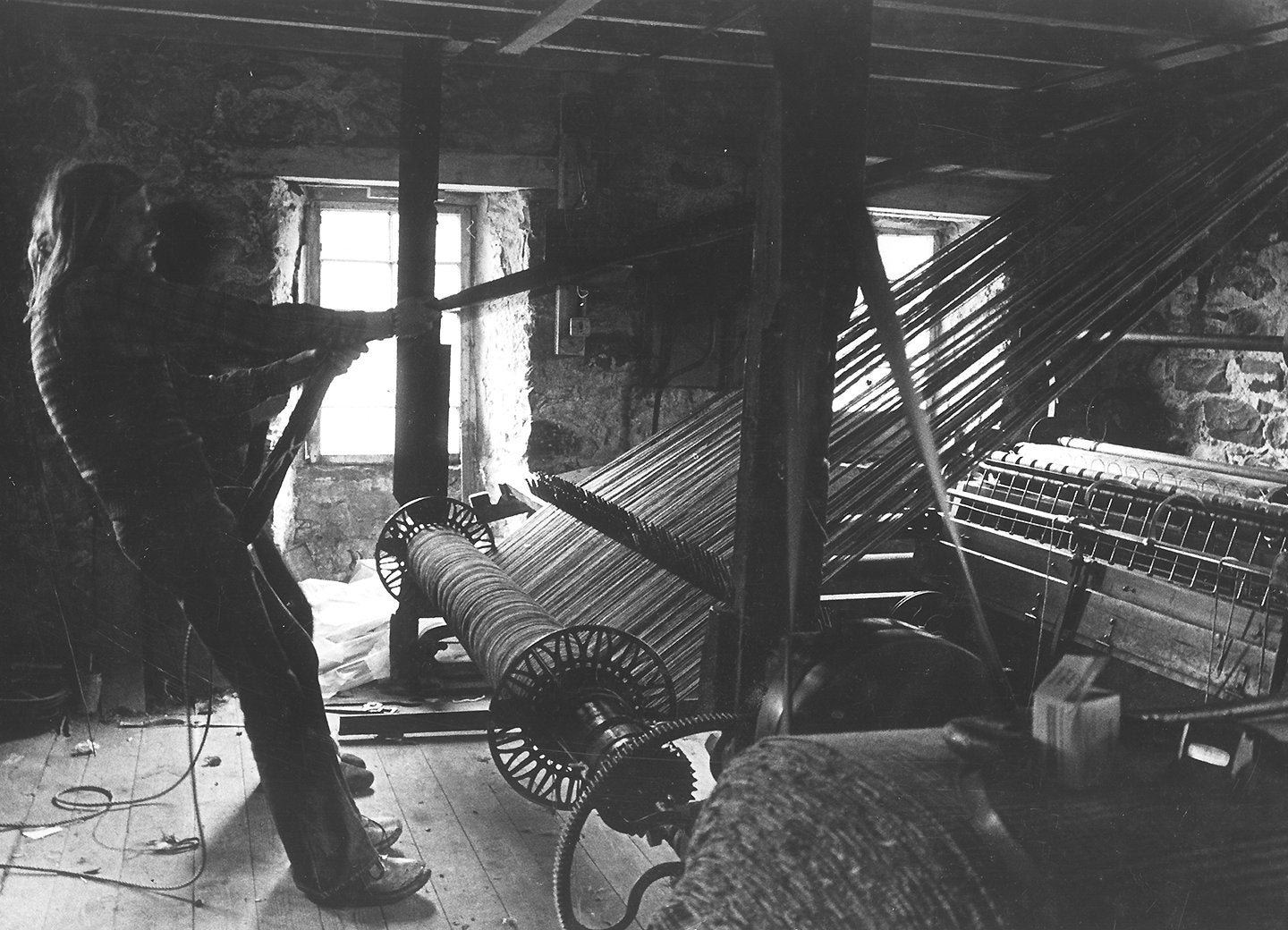
The Woolmill's mule is an 1870 Platt Brothers mule, made in Oldham. It is an early model of a ‘self-acting’ mule, which features 120 spindles. Prior to this, mule spinning in its infancy was powe...
Read more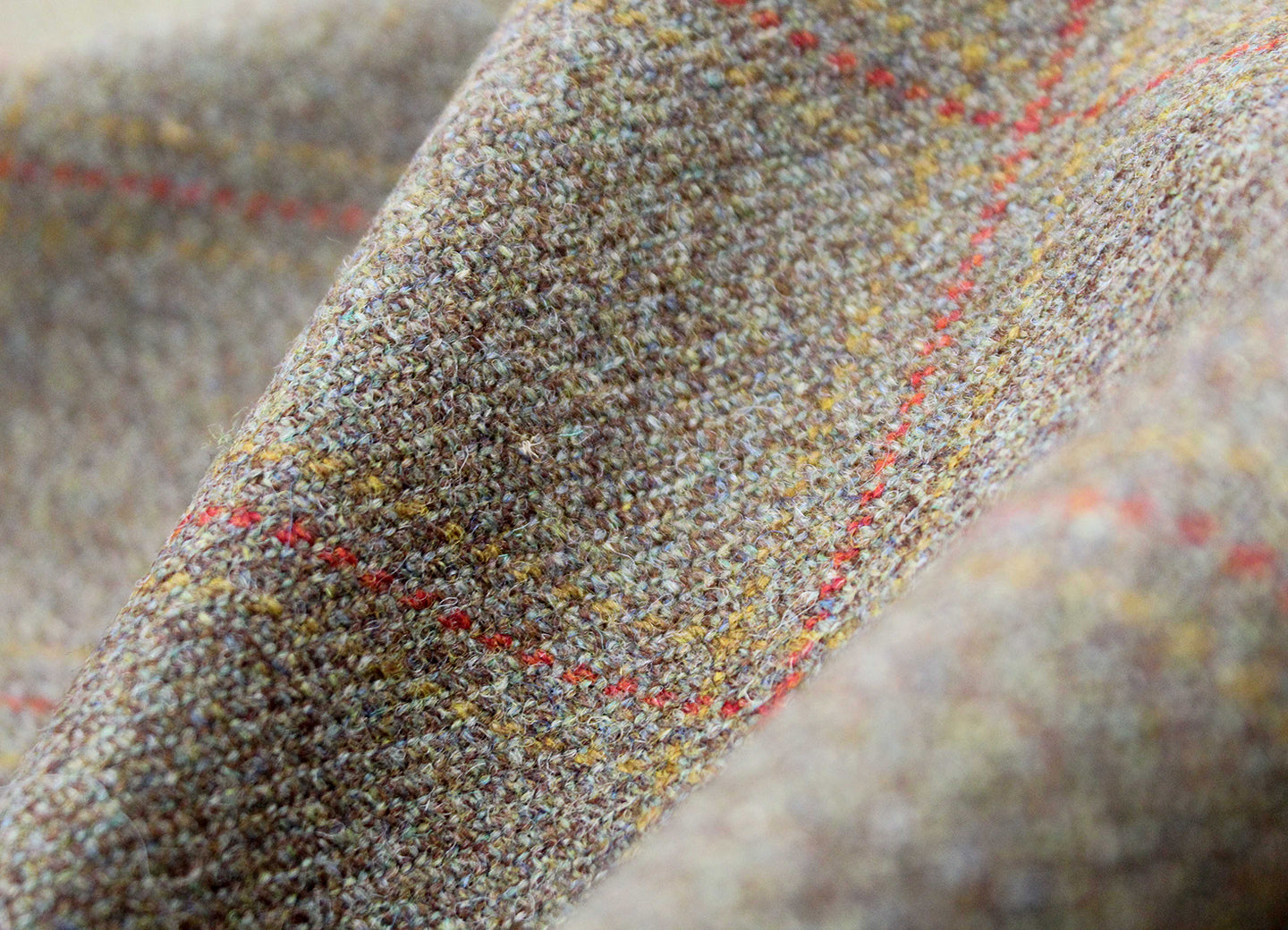
• Generally speaking, tweed is a woven, woollen, heavyweight fabric. • Tweed patterns have traditionally taken inspiration from the Scottish landscape and scenery. • The word Tweed derives from th...
Read more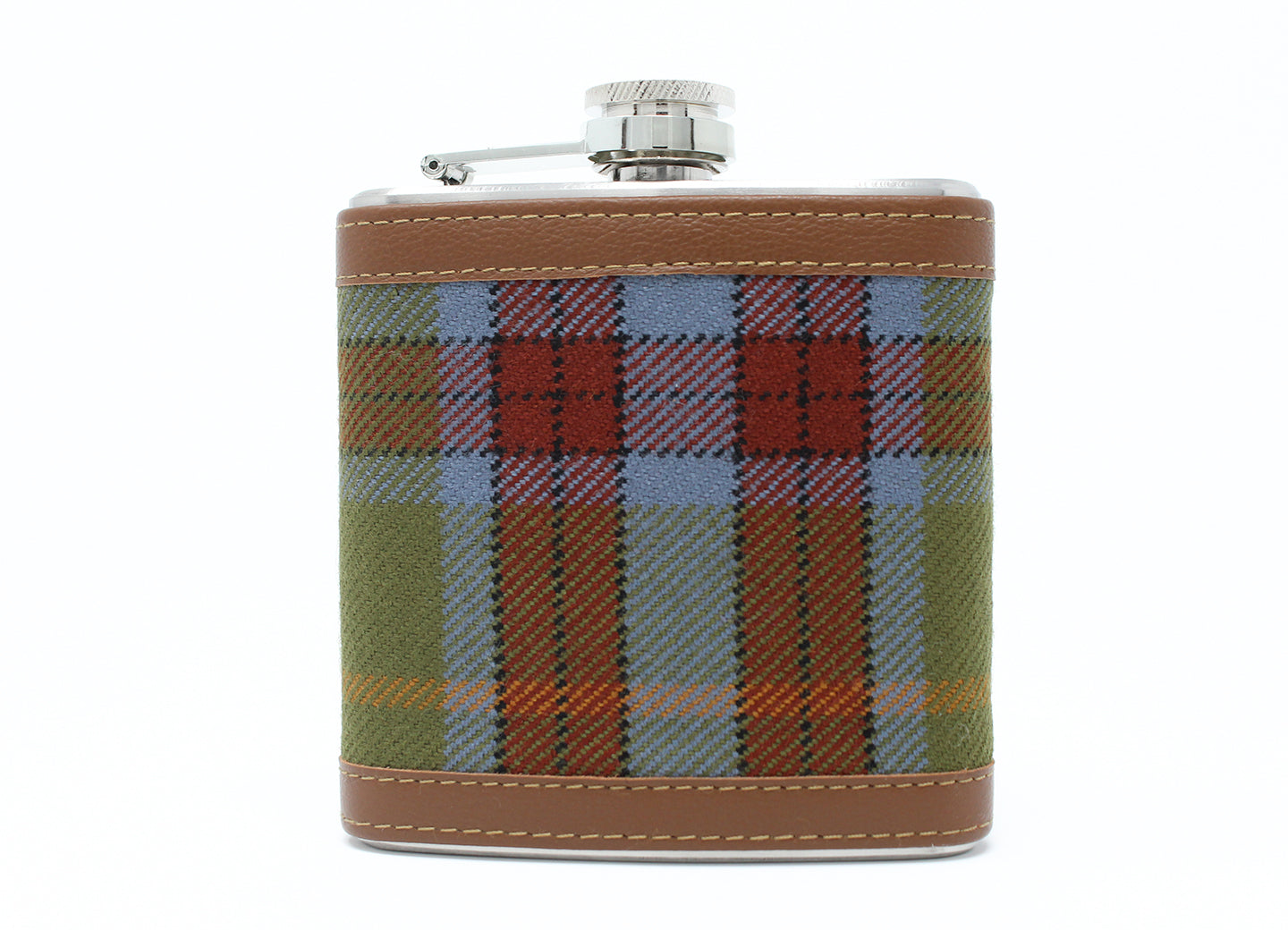
Unbe-Weave-Able Facts You Didn’t Know About Tartan
• The oldest known tartan design is the Falkirk tartan, which dates to around AD245. Used as a stopper for a pot to protect a treasure trove of over 2,000 coins, the fragment of cloth was found bur...
Read more
Interesting Facts About Sheep & Wool
In 2009, an 8-month-old Scottish ram called Deveronvale Perfection sold for £231,000 at the Scottish National Texel Sale at Lankark Market! The buyer, Jimmy Douglas, purchased the ram for breeding...
Read more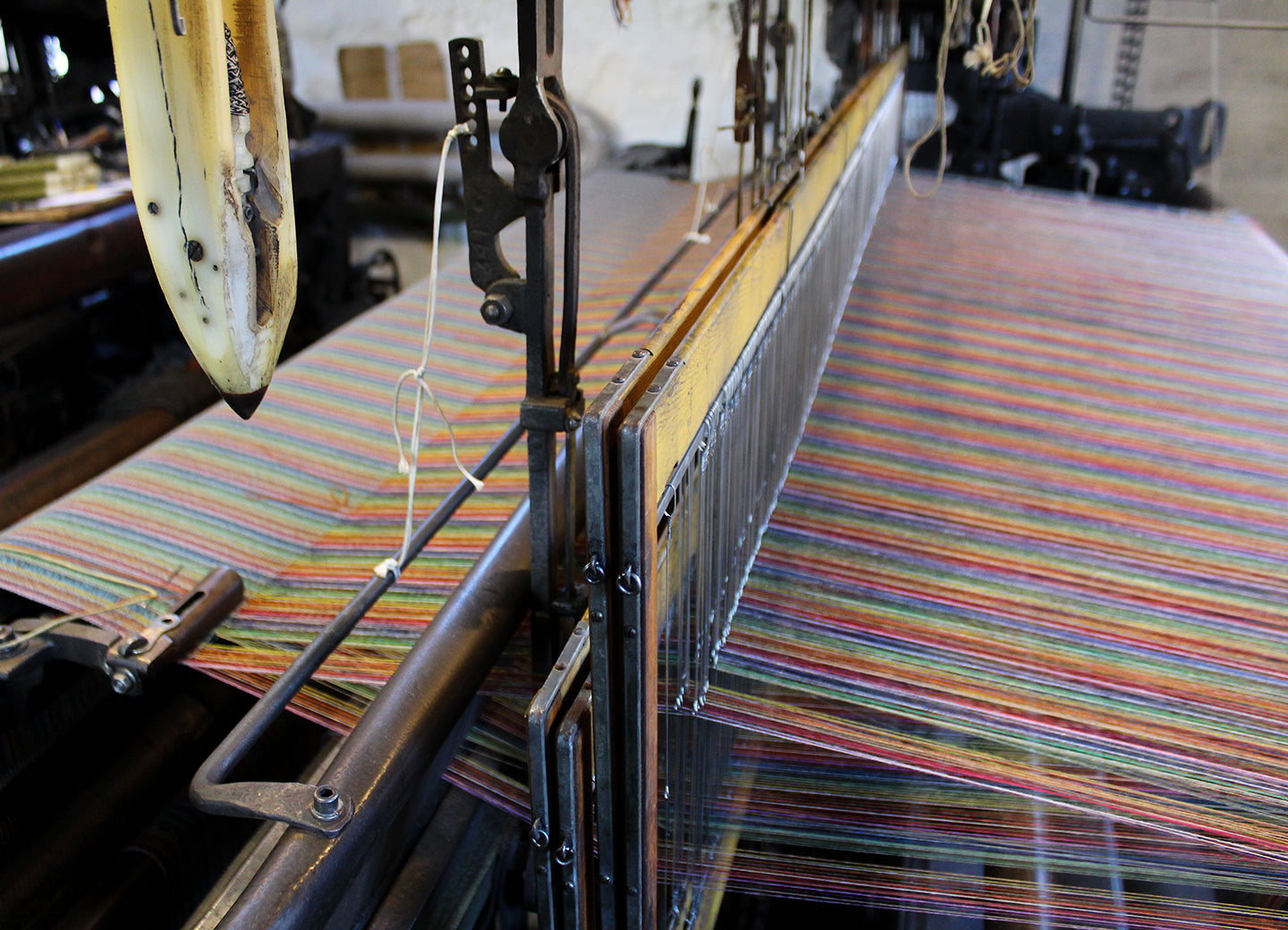
Production at the Woolmill - Weaving
Weaving is the introduction of the weft yarn, known as picks which run horizontally across the fabric. At Knockando Woolmill weaving is carried out on our Dornier Rapier looms and Victorian Dobcros...
Read more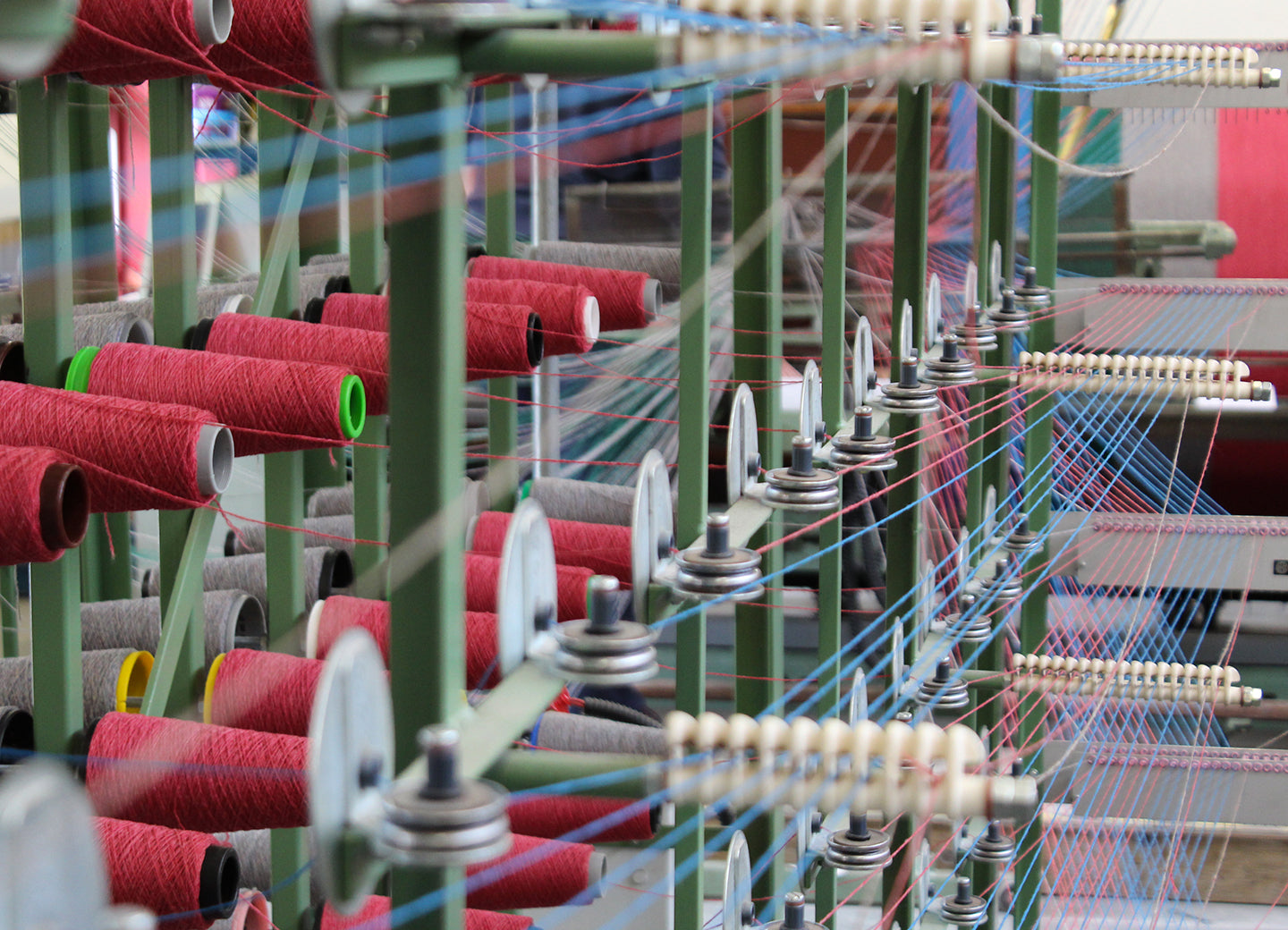
Production at the Woolmill - Warping
Warping is the preparation of the warp threads (known as ends) which run vertically from the top to bottom of a piece of fabric. The threads are set out in a pre-determined colour pattern - the num...
Read more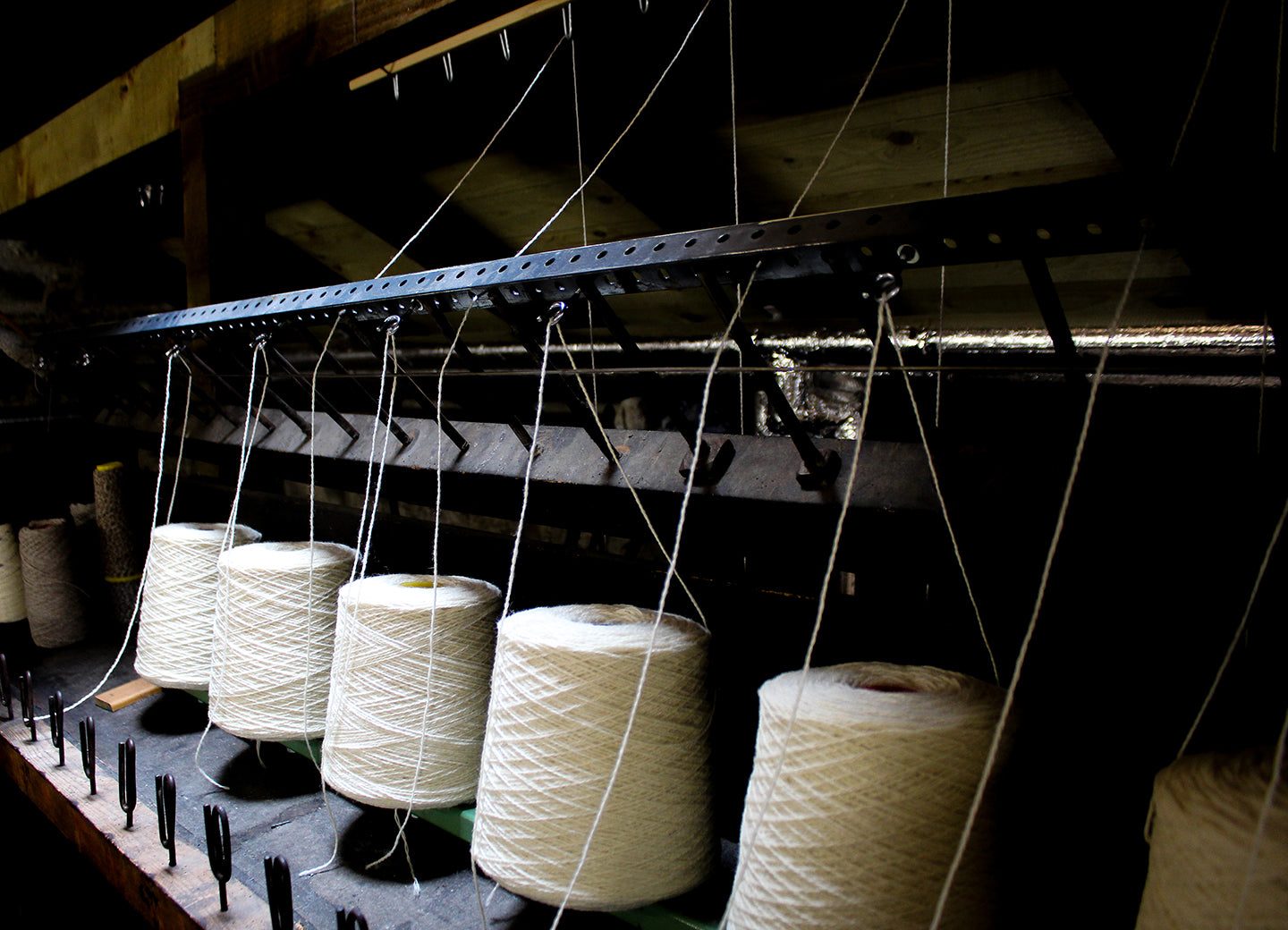
Production at the Woolmill - Plying and Hanking
After spinning, multiples of the single yarn can be plied together to form a two, three, four-fold yarn. The amount of twist can vary according to the end use of the yarn. For example, our Knitti...
Read more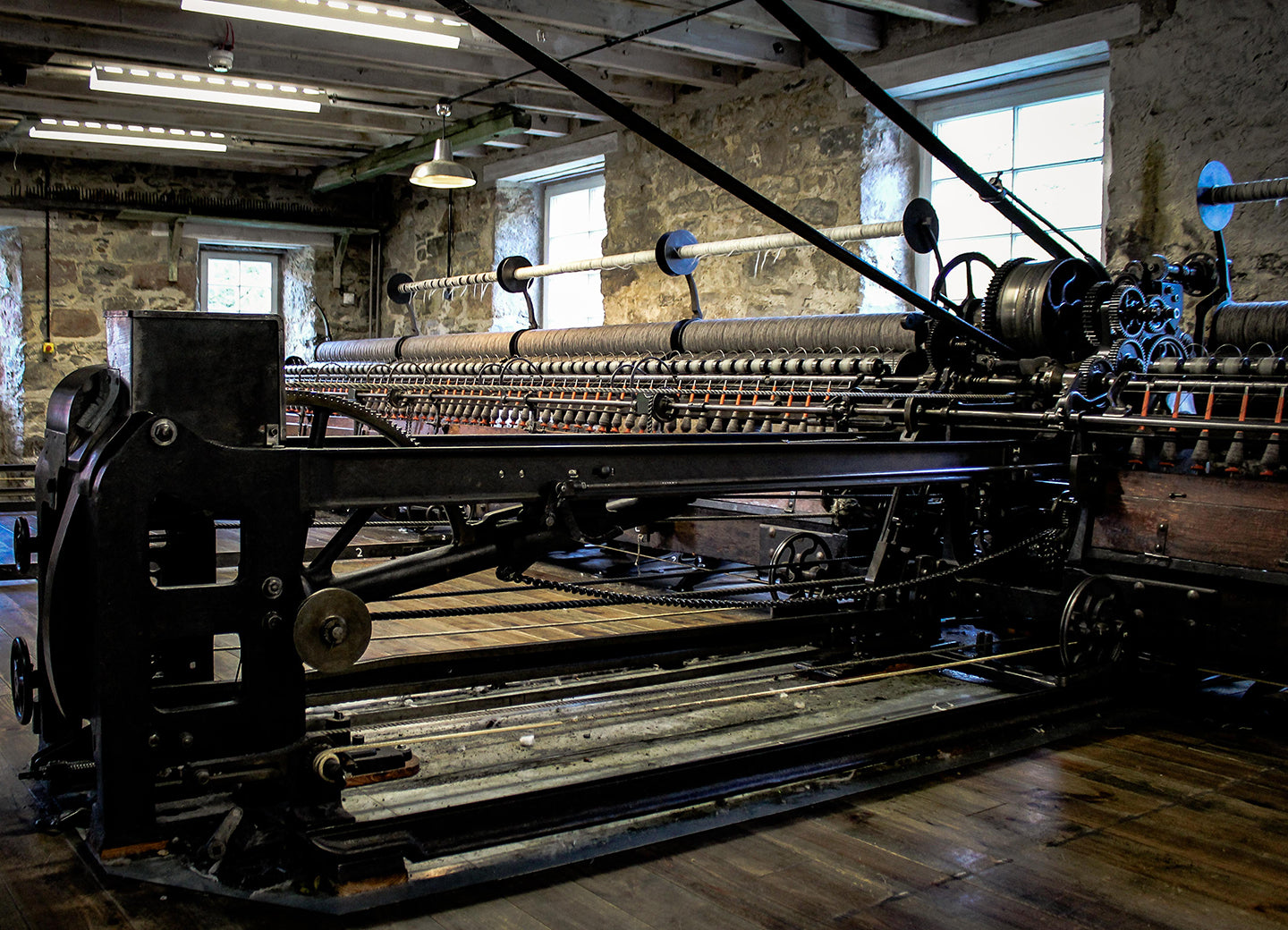
Production at the Woolmill - Spinning
The rovings from the carding set need to be twisted to produce yarn. At the Woolmill this is done on a spinning Mule. Rovings are fed through delivery rollers on to the 120 spindles on the mule ca...
Read more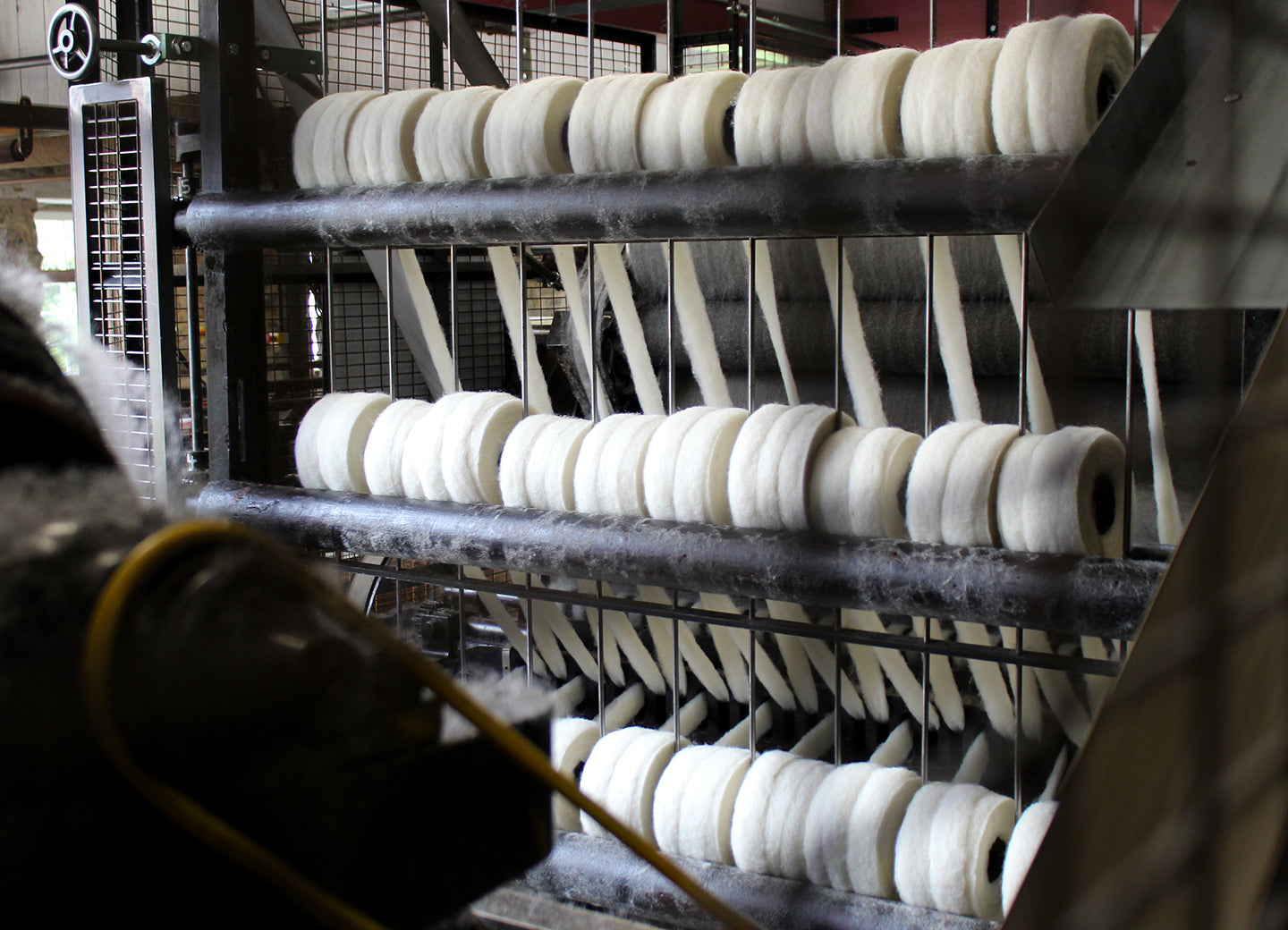
Production at the Woolmill - Carding
Carding is the process of mixing and aligning the fibres prior to spinning. Our carding set is pre-1900 and at least second hand - these machines would have been acquired from other local mills whi...
Read more
